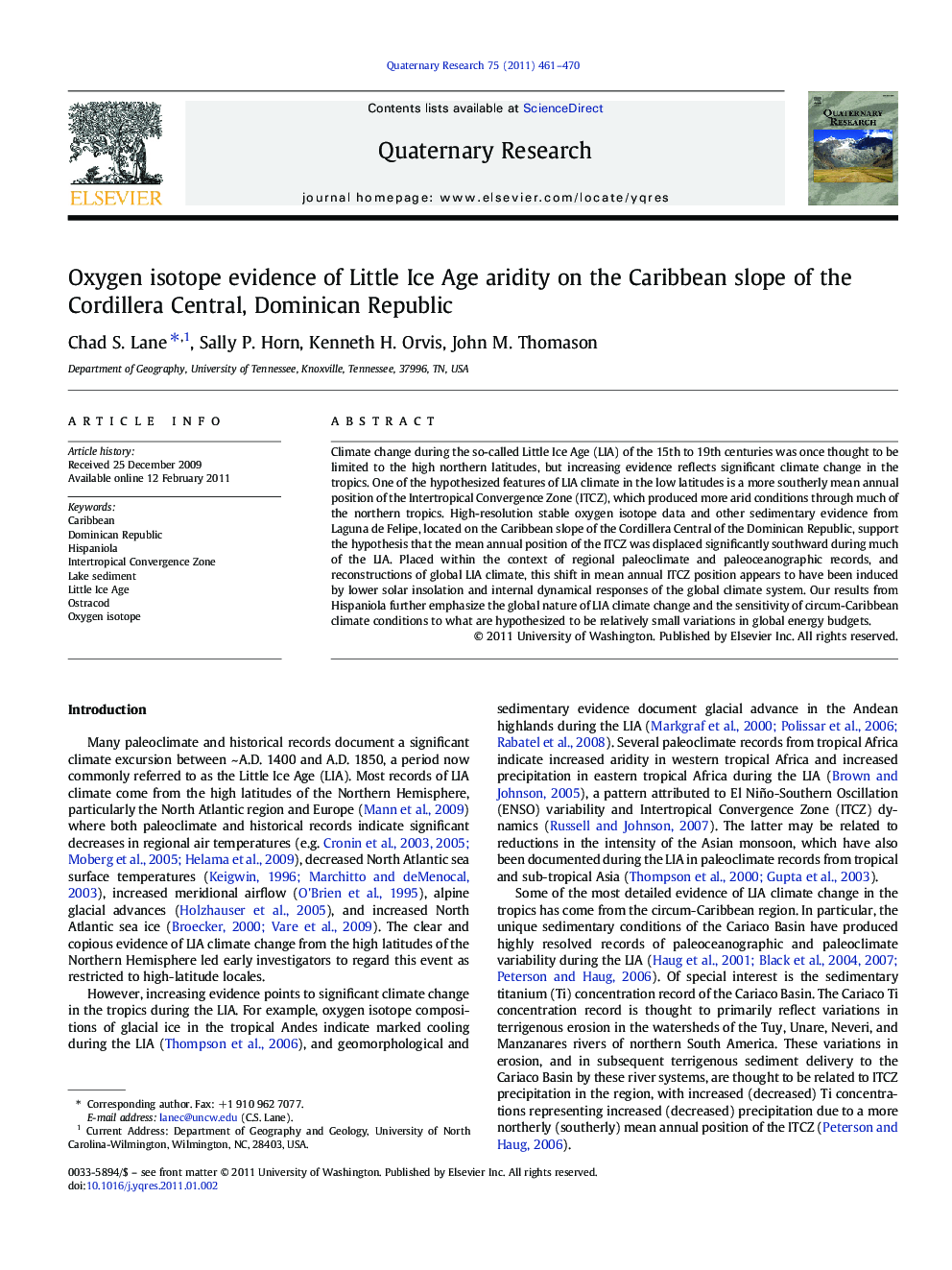| Article ID | Journal | Published Year | Pages | File Type |
|---|---|---|---|---|
| 1045818 | Quaternary Research | 2011 | 10 Pages |
Climate change during the so-called Little Ice Age (LIA) of the 15th to 19th centuries was once thought to be limited to the high northern latitudes, but increasing evidence reflects significant climate change in the tropics. One of the hypothesized features of LIA climate in the low latitudes is a more southerly mean annual position of the Intertropical Convergence Zone (ITCZ), which produced more arid conditions through much of the northern tropics. High-resolution stable oxygen isotope data and other sedimentary evidence from Laguna de Felipe, located on the Caribbean slope of the Cordillera Central of the Dominican Republic, support the hypothesis that the mean annual position of the ITCZ was displaced significantly southward during much of the LIA. Placed within the context of regional paleoclimate and paleoceanographic records, and reconstructions of global LIA climate, this shift in mean annual ITCZ position appears to have been induced by lower solar insolation and internal dynamical responses of the global climate system. Our results from Hispaniola further emphasize the global nature of LIA climate change and the sensitivity of circum-Caribbean climate conditions to what are hypothesized to be relatively small variations in global energy budgets.
